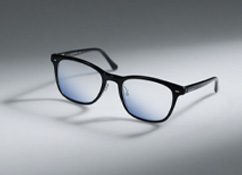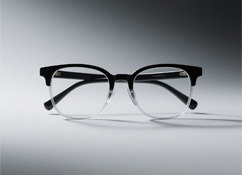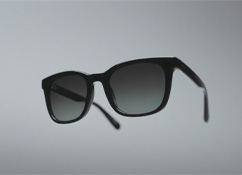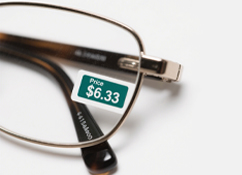Lens Refractive Index: How to Choose the Right One (And Avoid Wasting Money)
Ever felt pressured to buy those "high-index" lenses? Terms like 1.67 or 1.74 sound impressive, but they can cost twice as much—and they’re not right for everyone. Let’s break down what you really need to know so you don’t overspend.
What Even Is Refractive Index?
Put simply: It’s a measure of how well a lens bends light. The higher the index, the thinner the lens for the same prescription. Think of it like this: A higher index lens can do the same "light-bending work" with less material, so it’s slimmer.
Is a Higher Index Always Better? Nope—Here’s Why
High-index lenses are thinner, but they come with trade-offs:
They’re pricey: A 1.74 index lens can cost twice as much as a 1.56.
Potential distortion: They sometimes cause "color fringing" (blurry, rainbow-like edges around objects), which can make vision feel less sharp.
Less light? Some cheap high-index lenses let less light through, making things look slightly dimmer.
Bottom line: Thinner isn’t always better. Pick what fits your prescription and wallet.
Which Index Do You Actually Need? (By Prescription)
Prescriptions are measured in diopters (a unit of lens strength). Here’s what works best for each range:
-0.25 to -3.00 diopters (mild nearsightedness): 1.50 or 1.56 index. Thickness isn’t an issue, and they’re budget-friendly. No need to splurge!
-3.25 to -6.00 diopters (moderate nearsightedness): 1.60 index. Balances thickness and cost—more comfortable than lower indexes for this range.
-6.25 to -8.00 diopters (strong nearsightedness): 1.67 index. Noticeably thinner around the edges, so they look less bulky.
-8.00+ diopters (very strong nearsightedness): 1.74 index. The thinnest option—paired with the right frames, they’ll look sleek.
H2: Extra Tips for High Prescriptions
If you have a strong prescription (-6.00+ diopters), small tweaks to your frames can make a big difference:
Go small: Smaller frames mean less lens edge to show—thickness is less noticeable.
Full-rim frames: The rim hides thick edges, making the lens look more balanced.
Adjustable nose pads: They help the glasses sit better, reducing pressure and those red nose marks.
Lightweight materials: Titanium or TR90 frames cut down on overall weight, so even thin lenses feel comfy.
FAQ: Lens Refractive Index
Q: Can I get coatings with any index?
A: Yep! Anti-glare, blue light blocking, or UV protection coatings work with all indexes—they just add a little to the cost.
Q: My prescription is for farsightedness (+ diopters). Does this still apply?
A: Sort of. Farsighted lenses are thicker in the center (not the edges), but higher indexes still slim them down. Follow the same diopter ranges above.
Q: Is 1.74 worth it for a -5.00 prescription?
A: Probably not. A 1.60 or 1.67 will be thin enough, and you’ll save money. Reserve 1.74 for -8.00+.
Final Thought
Lens index is all about balance: get a thin enough lens for comfort, but don’t pay for what you don’t need. Mild prescriptions? Stick to 1.50–1.56. Strong ones? 1.67 or 1.74 make sense. Either way, your eyes (and wallet) will thank you.











